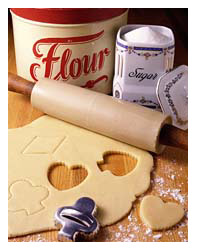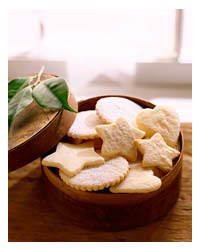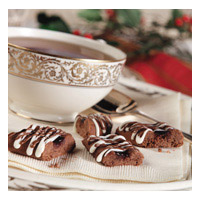

1. Use either margarine or butter interchangeably unless a recipe specifically calls for one or the other. Butter and margarine give cookies their flavor and crisp outside texture. When a recipe calls for solid shortening, it will usually produce a cookie with a crunchy texture. Use of whipped butter or low calories butter can often ruin the recipe. Those spreads have added air and water in them and will change the consistency of the recipe. Most cookies call for softened butter for the best blending consistency. Let butter stand at room temperature for 30 to 45 minutes. Be careful not to let it soften too long as this can result in dough that is too soft.
2. Preheat the oven 10 to 15 minutes before you begin baking cookies. This is usually consistent unless a recipe specifically calls for you to start with a cold oven.
start with a cold oven.
3. Accurately measure ingredients with standard measuring cups and spoons.
4. Take care not to overmix or beat the dough to vigorously after adding the flour, or cookies will be tough.
5. Place dough to be baked on "cool" cookie sheets. Rotate cookie sheets and rinse and wipe clean between batches. During my cookie marathon, I would have four cookie sheets going at the same time. One with dough ready for the oven. One with cookies cooling for a few minutes. One in the sink and one rinsed, wiped clean and ready to load.
6. Use shiny aluminum pans for baking cookies. They brown evenly and lightly. Dark sheets tend to absorb the heat and will overbrown the bottoms of your cookies. If you use an insulated baking sheet, remember since the bottom does not brown as fast, you may have a longer baking time.
7. Don't grease pans with butter or margarine. Use solid shortening. Butter tends to make cookies brown too fast and oils and sprays tend to cause sticking.
 8. Make sure to leave room between cookies on the cookie sheet. Usually a good rule of thumb is to put 2 inches between cookies. If they are extremely large cookies or the recipe calls for more space, adjust the space.
8. Make sure to leave room between cookies on the cookie sheet. Usually a good rule of thumb is to put 2 inches between cookies. If they are extremely large cookies or the recipe calls for more space, adjust the space.
9. Use a baking sheet that is at least 2 inches smaller all-round than your oven. This will allow for the proper circulation of hot air. For that same reason, usually bake only one sheet of cookies at a time. If you use a convectional oven, this is not an issue.
10. Cool cookies on wire racks. This will allow the steam to evaporate and will keep your cookies from becoming soggy.
11. Use a pancake turner to remove and move cookies from baking sheets. This will keep warm cookies from tearing or breaking.
12. Watch the baking time. Always check cookies at the minimum baking time. Even one minute can mean the difference between a cookie that is done and one that is ruined. Immediately remove from the baking sheet with a pancake turner unless the recipe calls for them to cool for a specified time on the cookie sheet.
13. Use an accurate timer. Try using the timer on your microwave or try the great little timer from Pampered Chef. They are both VERY accurate. Most of the department store kind are okay, but not as accurate.

14. Cookies are done when they are firmly set or they are golden brown on the top or according to recipe directions. Chocolate cookies are a little harder to check. The first batch, you basically have to rely on the baking time noted. Some recipes will say that it will have a glossy sheen to them. Just take note of results from the first batch and adjust your time on the rest. Note the time on your recipe so that you have the best cooking time for your specific oven, the next time you bake the cookies.
15. Brownies and cake like bars are usually done when they pull away from the sides of the pan or when a tooth pick inserted in the center of the brownies comes out clean or when the center is set. Bars or brownies are harder to determine. Use the specified time on the recipe. Just remember that overbaking this type of bar cookies will produce dry and brittle brownies.
- Tips for Baking Great Cookies, Homemade Cookies and More, http://www.homemadecookiesandmore.com/cookietips.htm